Coplay
COLLEGE
UX
ACCESSIBILITY
BRANDING
TEAMMATES
Joseph RogersKennedy Liggett
Rachel Thomas
CONCEPT
Currently in society, non-disabled kids and kids with disabilities are separated from each other at schools, camps, sports, and other childhood activities. This segregation has lead to disabled children feeling isolated and “less than” other kids their age. Disabled children often struggle with social communication and interaction with other kids their age, and this segregation only worsens their situation. Our goal is to use play to normalize disabilities through social interaction, and educate both groups (the non disabled and disabled) on how to interact with one another. CoPlay is a videogame that brings ALL kids together through a virtual world of interactive mini-games. Each mini-game involves social communication in a subliminal way to help all children learn from each other.


CoPlay is made up of a variety of minigames that are based off of 8 different social communication methods. The purpose in doing so is to help kids with social communication disorders improve socially.

Coplay utilizes voice tracking technology to determine what emotions your child is experiencing as they play our game.
If the voice tracking detects an emotion in your child, their screen will react accordingly. This allows a child to become more in tune with their own emotions as they are exposed to the language and vocal cues that correlate to happy, sad, angry, or stressed reactions.
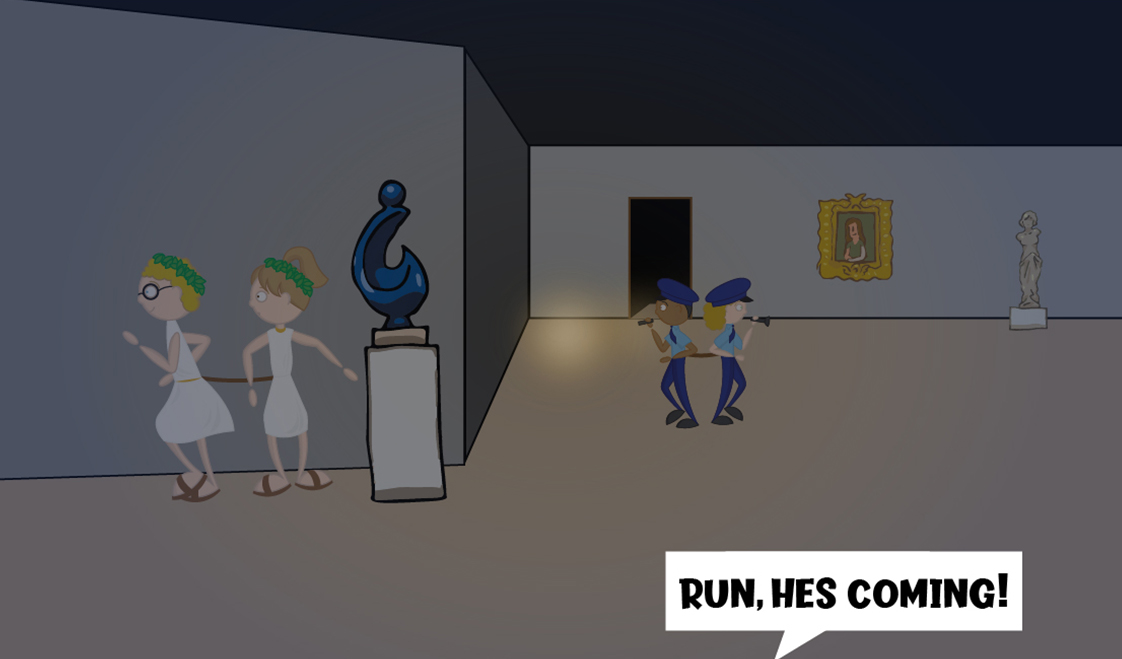
This is an example of how the mini-games would work. When a kid enters a mini-game, they are paired with a partner, and they must communicate with their partner in order to complete the mini-game. In this particular mini-game, Body Body, players are statues that have come to life. Players must avoid the night guard or risk turning back into a statue. The only problem, players and their partners are connected and must communicate to move around the museum.

Each mini-game is based off a popular childhood game so kids have some familiarity to the games.

In another example, The Floor is Lava, players are on an archeological dig at a Mayan Temple when all of a sudden, a volcano at the site explodes. Players and their partner must hurry and find their artifacts before they burn up. But be careful because the floor is lava.
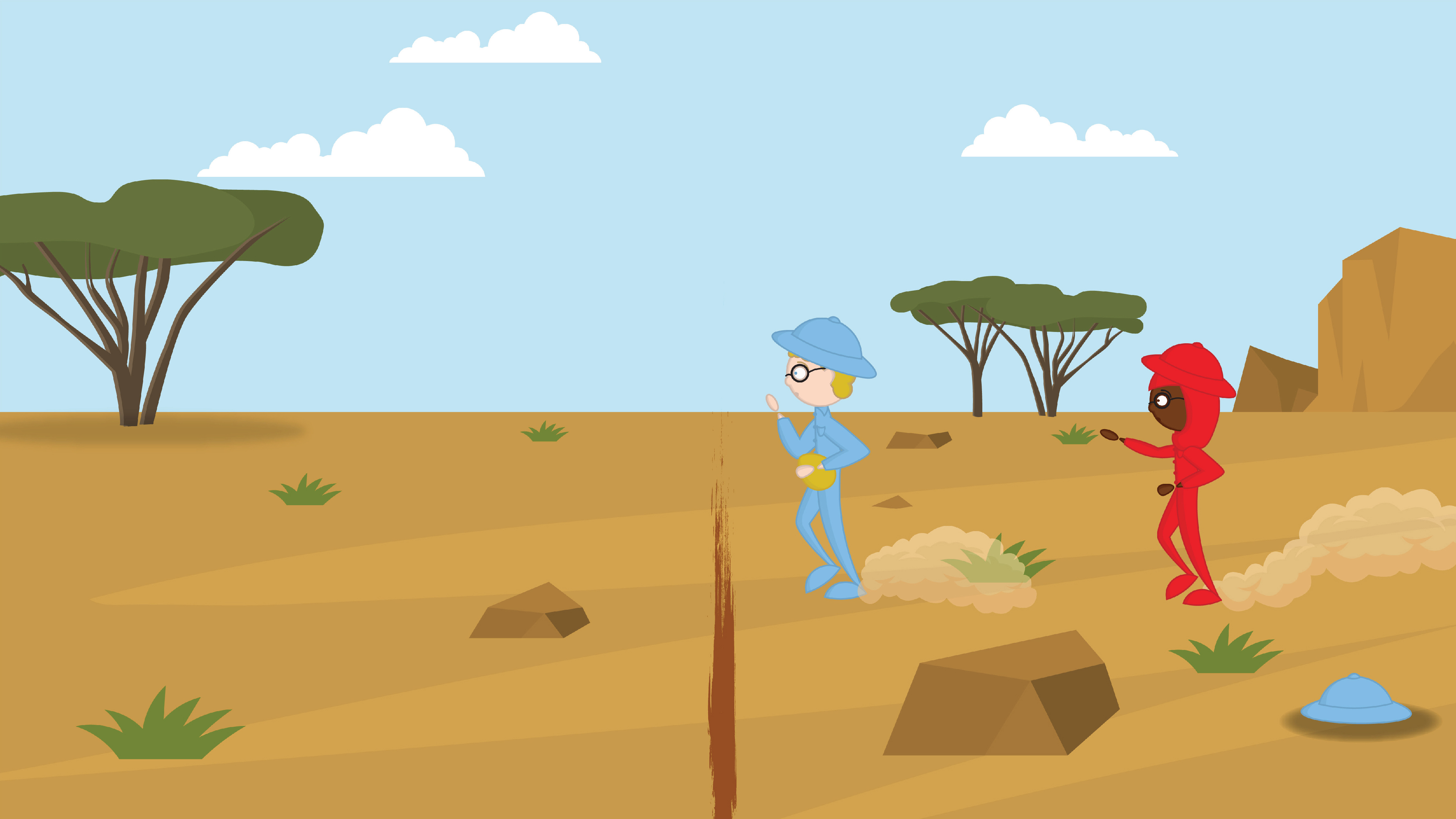
In another example, Capture the Golden Egg, there are two teams (with four players each). Each team has an ostrich egg that they must hide in their section of the savanna. The opposing team is trying to find the other team’s egg and bring it over to their section.
While Coplay is a game for everyone, it was made for kids with social communication disorders. Due to this, we had 7 personas to represent different disabilities and disorders that struggle socially. The personas also represent the different ways in which someone can use Coplay.

Stewie & Marley were paired randomly in a game of Body Body. Through the game they learned to understand each others emotions and became friends

Stewie is browsing through his subscription box on YouTube when he notices that one of his favorite YouTubers has posted a new gaming video. He clicks on it and realizes it is a game he has never seen before: Coplay. As he watches, he decides that he wants to play the game himself.
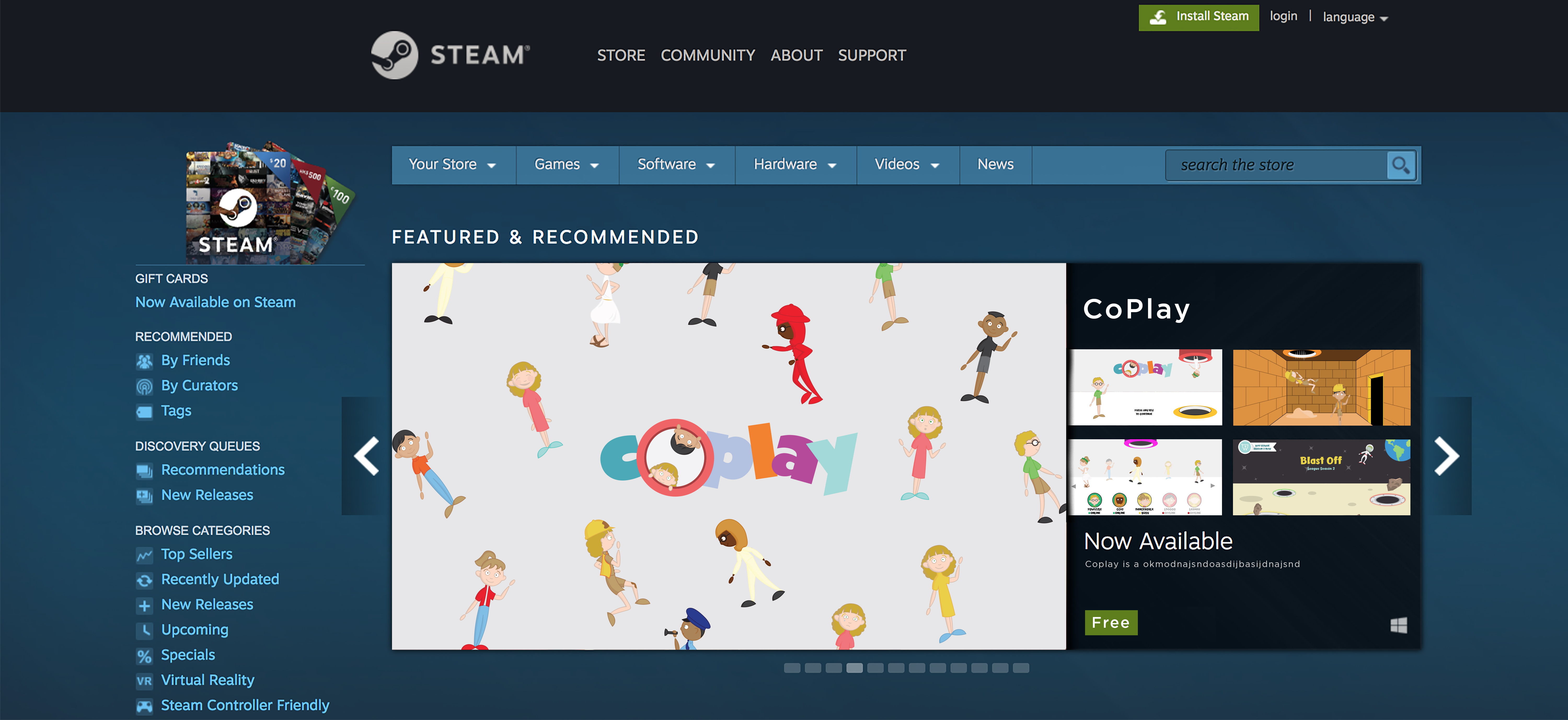
Stewie goes onto Coplay’s website and downloads the game for free onto his computer.

Once the game is done downloading, Stewie opens it and is prompted to make an account. He chooses his username and password and makes an avatar for himself. He chooses from a set of options for skin color, eye color, hair, hair color, and outfit.

Once Stewie’s avatar is created, his avatar is dropped into the game and he is able to decide what mini-game he wants to play. He sees a hole with a statue next to it labeled Body Body and decides to jump in.
When you open up Coplay, you’ll be brought to the lobby. Everyone who is online will be walking around in the lobby. Each hole on the ground represents a mini-game. Players can jump into a hole to play that mini-game.

When he jumps into the hole, he is brought to a screen that has three different holes on it, each representing a level of Body Body. Level two and three are blocked so Stewie jumps into the hole labeled level one.
Each mini-game is comprised of levels. The social communication aspect of the mini-games will get more difficult as the levels increase. This allows for kids with disabilities to play at a level they are socially comfortable with depending on their abilities. Players unlock the next level when they get through the previous one without displaying any signs of stress, anger, or sadness.

Stewie is then brought to a screen where he can choose if he would like to play with a friend or someone random. Stewie selects random partner. He then drops into the Body Body lobby and waits for his partner to drop in.
Shortly after, an avatar with the username “Larmar” drops into the lobby. Stewie excitedly introduces himself. Marley is nervous talking to Stewie because new social situations make her uncomfortable. However, she is comforted by the fact that she is talking to Stewie through a video game rather than face to face.

Stewie and Marley are assigned the role of the night guard, which means they must work together to navigate the museum and catch all the statues that have come to life.
Stewie struggles taking turns and takes dominance when it comes to deciding where him and Marley should go in the museum. Every time Marley starts to suggest they go somewhere, he interrupts her. Because of her social anxiety, Marley has trouble asserting herself. As she’s playing with Stewie, she tries to speak up and mention which direction they should head, but every time she begins to say something, Stewie interrupts her. Marley begins to get overwhelmed by the situation and has trouble focusing on what Stewie is saying.

Stewie can’t move throughout the museum because Marley is no longer moving with him. He starts to get frustrated and notices that his screen starts to turn red and it becomes harder to see the game. Marley begins to shut down and stops moving her avatar.
Distracted by searching for statues, Stewie hadn’t realized that he had begun to get angry, and he starts to calm down. He notices that as he begins to calm down, the red screen fades away.

Once Stewie calms down, he notices that Marley’s avatar looks upset. He knows he struggles when it comes to taking turns and realizes he did what he usually does when communicating with others and didn’t give Marley the opportunity to speak.
Stewie and Marley continue playing and Stewie tries to remember to give Marley more opportunities to decide where they go. Each time he forgets and becomes overbearing, he notices that Marley’s avatar looks sad, reminding him to let her speak as well. The longer they play, the more Stewie notices that Marley’s avatar doesn’t get sad as often. Instead, her avatar appears happy. When their game ends, Stewie sends Marley a friend request and she accepts.
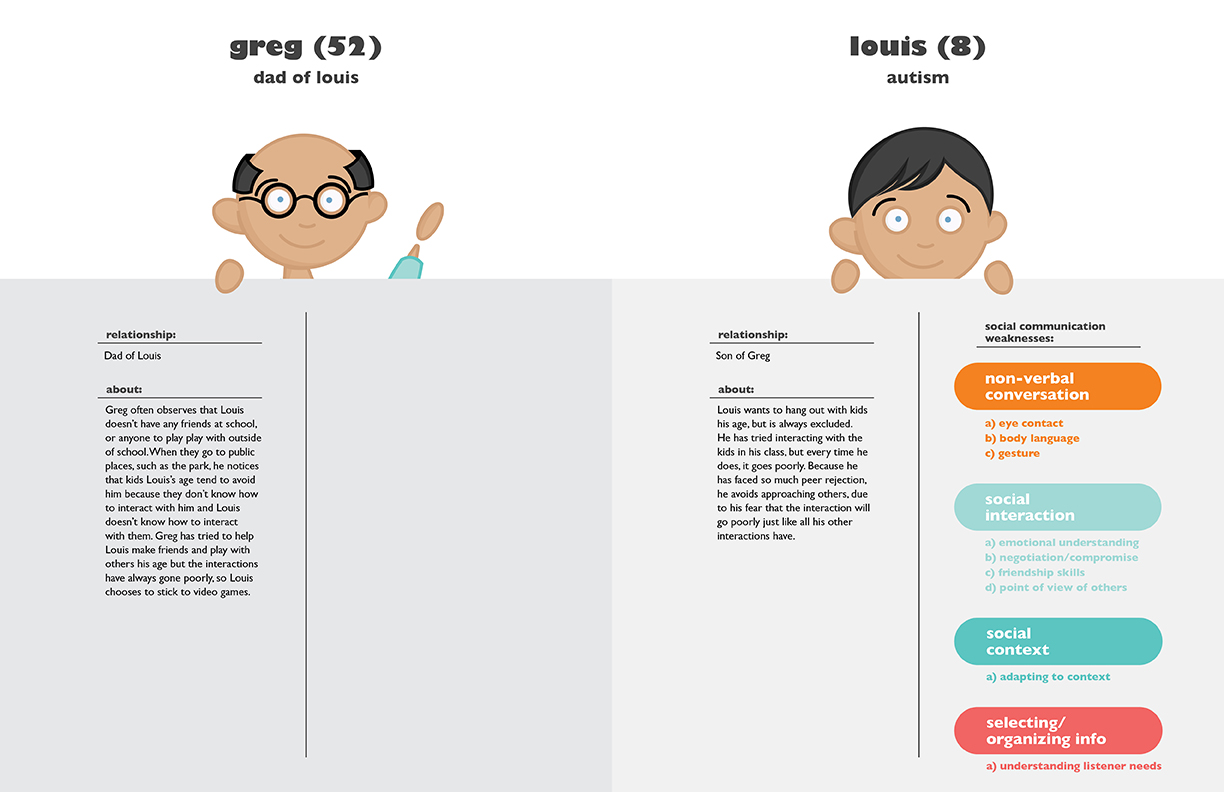
Coplay has a feature that allows parents of children with social communication disorders to select what aspects of communication their child struggles with and get a list of mini-games that would be most beneficial to their child. Parents also have the ability to view their child’s progress in each mini-game.
Greg notices that his son, Louis, struggles when it comes to making friends. He is always looking for ways to help Louis better communicate with his classmates, so he was happy to learn about CoPlay from Louis’s therapist. When Louis signs up, Greg goes through Coplay's parent section of the website to see what games are best for his son and track his son's progress.

Louis’s therapist recommends that Louis play Coplay because he believes it will help him grow socially. The therapist also tells Greg that the game gives parents the ability to track their child’s progress in Coplay. Here is an example of a brochure that would be located in therapist offices.

Greg decides to have Louis download the game because he really wants to see his son make friends.

After Louis downloads Coplay, Greg signs up for a parent account.
Greg then chooses which communication methods Louis struggles with. As he selects them, the mini-games change sizes depending on the games that are the most relevant to his child.
The largest circles would be the mini-games that are the most relevant to your child. Parents can also see what communication methods a particular game helps with based on the colored circle that surrounds the mini-game.
Greg then filters the games to see which mini-games Louis has been playing the most. The ones that Louis hasn’t been playing that often are transparent. Greg notices that one of the games that Louis would benefit the most from, he hasn’t been playing. Letting him know that he needs to encourage Louis to play it more.
Greg then clicks on Capture the Golden Egg to view Louis’s individual stats for the the game.
Greg selects the communication filter and sees that Louis’s communication has greatly improved compared to when he first started playing the game. It gives him confidence that Louis will eventually get to the point where he can successfully communicate with others.
Coplay has a feature called The Leagues that allows kids to compete in physical versions of the mini-games. Kids enter The Leagues with a partner and are then paired randomly with six other players to complete their team of eight. Kids will compete at a Regional level, and if they win, advance all the way up to Nationals. Each year, eight new mini-games are released with The Leagues, and only those signed up for The Leagues have the ability to play them. At the leagues themselves, each kid will compete with a partner from their team in two different mini-games to gain points for their team. The teams with the most points at the end advance.
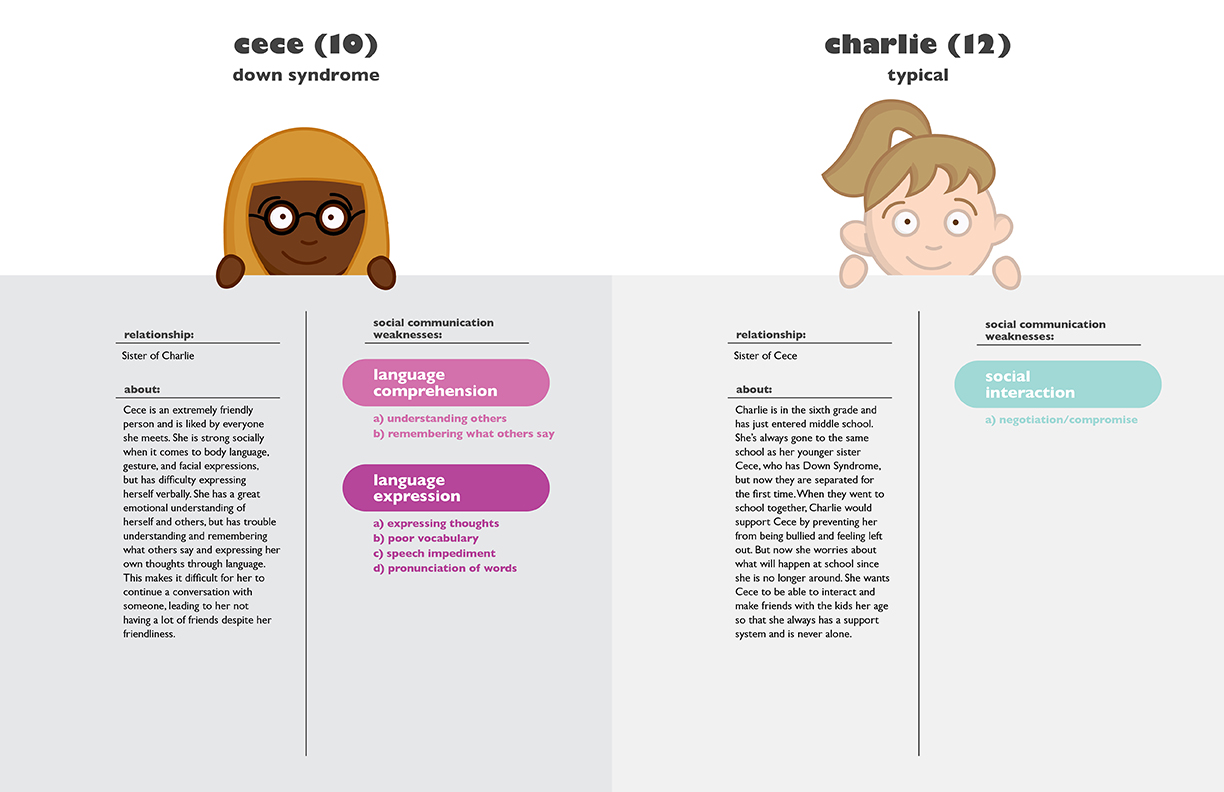
Charlie worries about her sister Cece, who gets bullied a lot at school. She is excited that CoPlay is helping Cece learn and meet new friends, and she wants to encourage her to keep playing. Charlie joins the leagues with Cece hoping she will meet new friends that she will be comfortable interacting with in person.

The Leagues have an annual theme and new social media advertising every year. Every year, the eight new mini-games released would revolve around this specific theme.
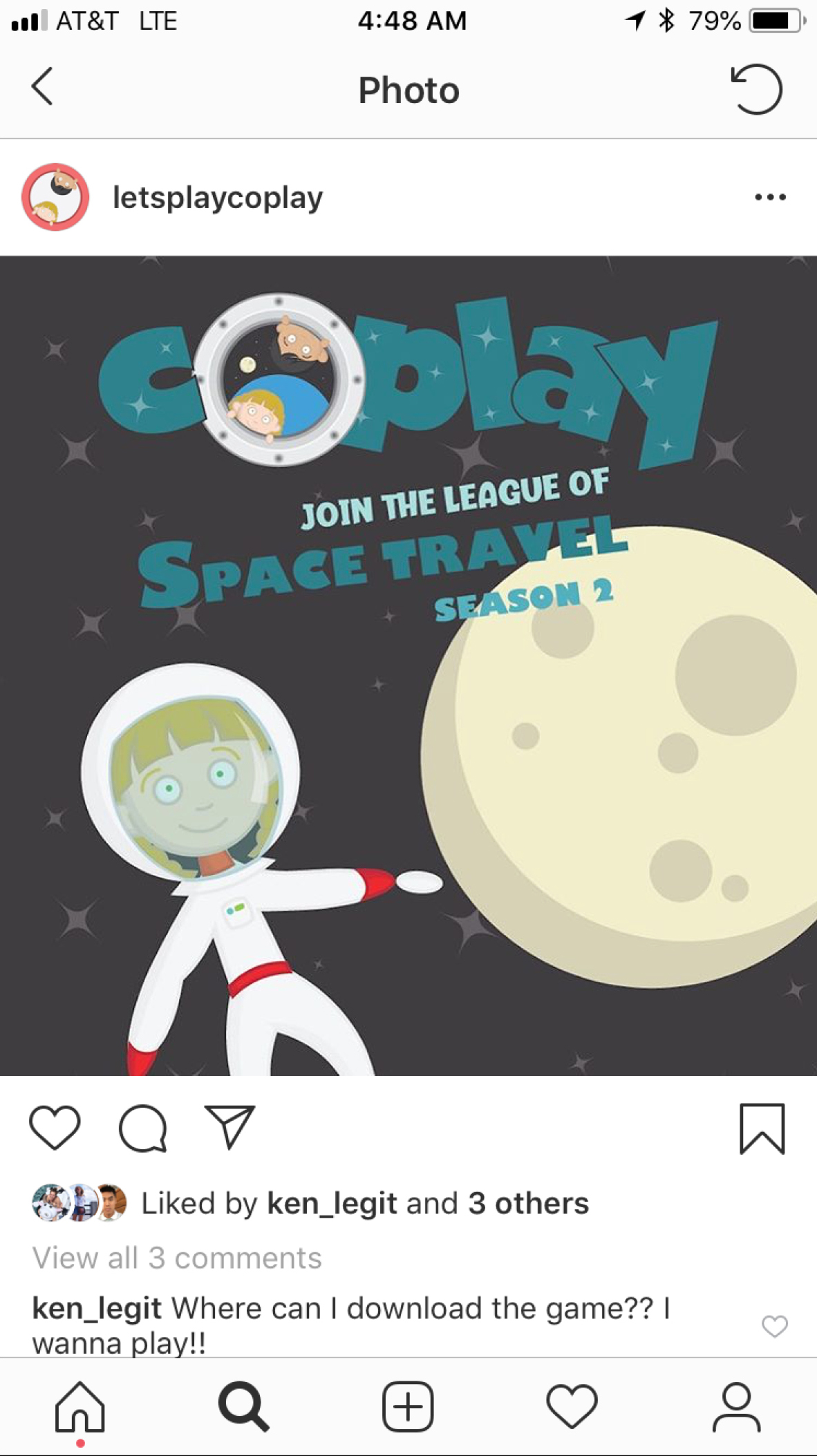
Charlie is browsing through Instagram when she sees an ad for The Leagues. Her and her sister, Cece, enjoy playing Coplay together and she thinks The Leagues would be a great opportunity for Cece to meet some people in their area who play the game as well.

Cece and Charlie go onto Coplay’s website to sign up for The Leagues.

Charlie puts in her username, where her and Cece live, and chooses Cece as her partner. Once she is done filling out the information, an email is sent to her mom to get her permission to officially sign up.

Cece and Charlie’s mom approve their sign-up and they are randomly paired with six other people in their area to form a team of eight. Their six teammates are automatically added to their friends’ list on Coplay and they begin playing the Leagues games with one another online.

The mini-games for the Leagues will be branded to resemble the theme for the year. Only people who have signed up for the Leagues will be able to play The League mini-games online. This will encourage people to sign up for The Leagues.
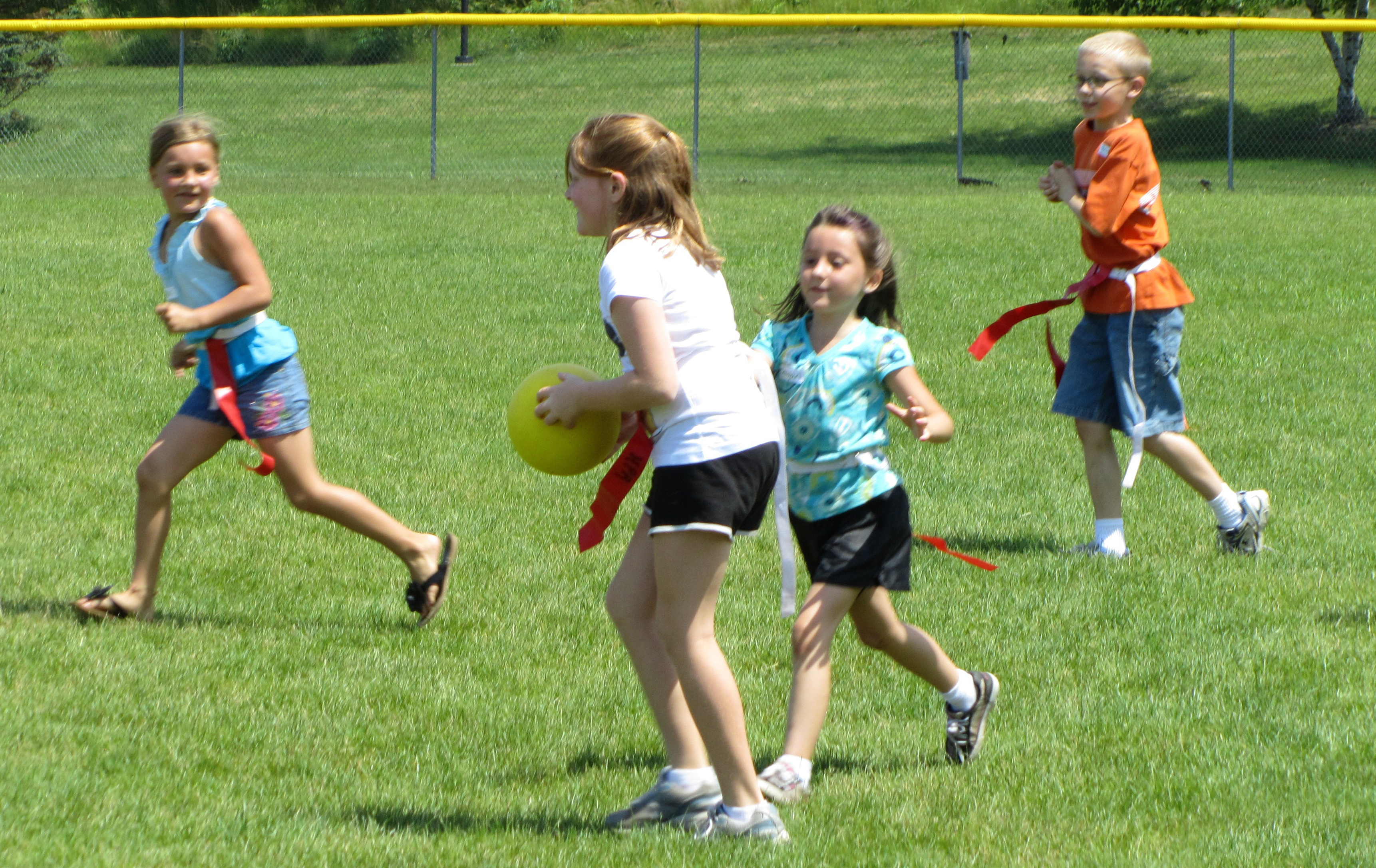
Eventually, it is the day of the Leagues and Cece and Charlie head to their local competition. They are playing as partners for the game The Floor is Lava. Cece is blindfolded and Charlie is using a walkie talkie to give her instructions on where to go.
Cece and Charlie end up finding the item they were looking for first and they win Capture the Golden Egg for their team. Their entire team races over to celebrate.
One of our goals for Coplay was to show kids with disabilities that Coplay is a safe place for them. We chose to do this by creating ambassadors for our brand. The ambassadors would range from typical kids to kids with social communication disabilities. Our hopes with the ambassadors is that a kid with a social communication disorder will see an ambassador with the same disorder and think to themselves, "this person is like me, and if they like this game, I might too."
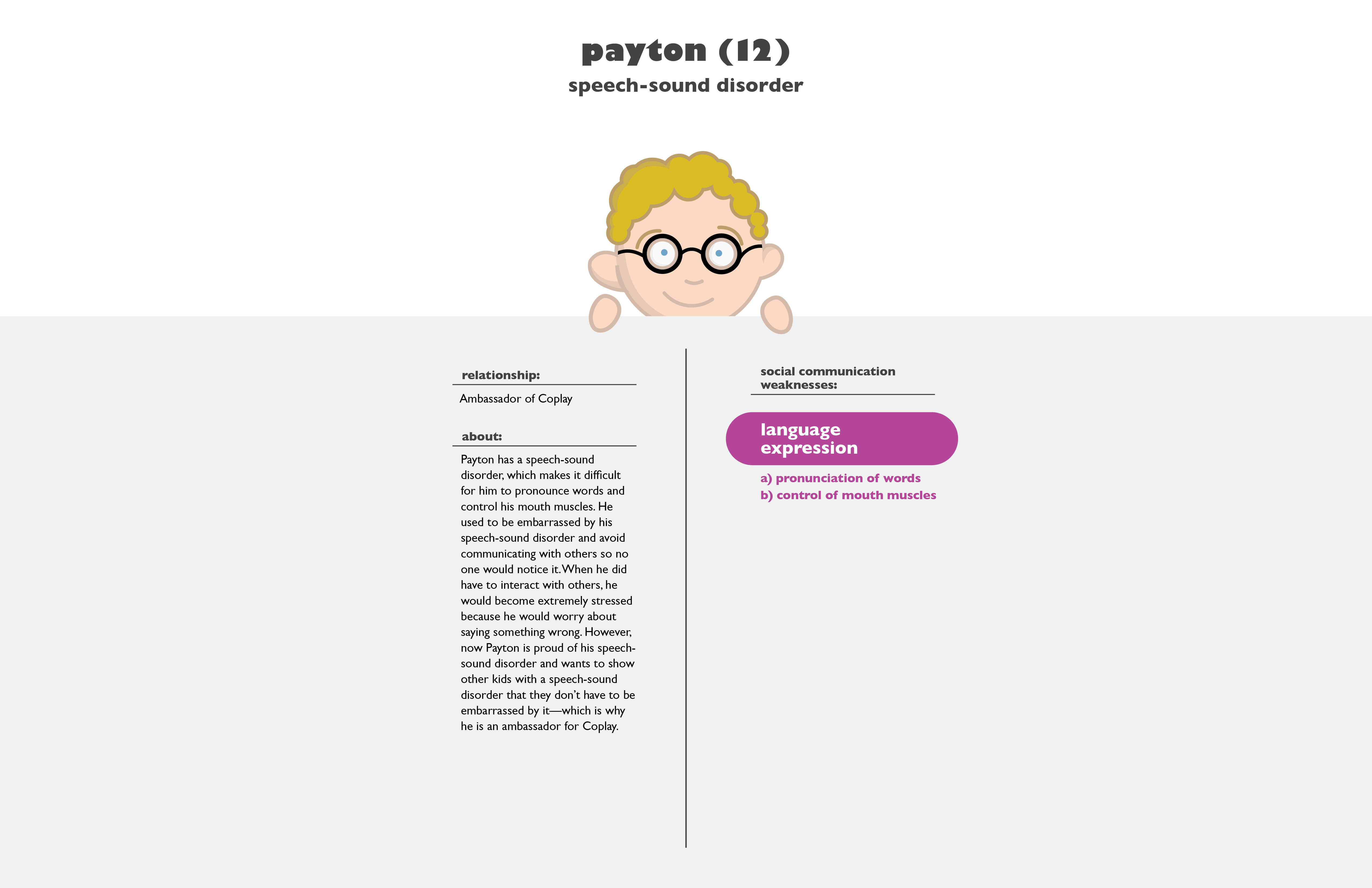
Payton is an ambassador for CoPlay who has a speech-sound disorder. He loves representing Coplay at The Leagues and through his youtube channel and social media.

Payton has a YouTube channel where he posts gaming videos of himself. He typically posts videos of him playing Coplay with his friends or strangers.

Payton is an ambassador for Coplay and represents the video game. His role is to be open about his speech-sound disorder to show other kids who have a speech-sound disorder that they aren’t alone. It also helps kids think to themselves “hey, there’s another kid out there with my disability who is playing this game so I can too.”

Payton also assists at the leagues providing commentary as the players are playing. He follows them up with interviews afterwards.
